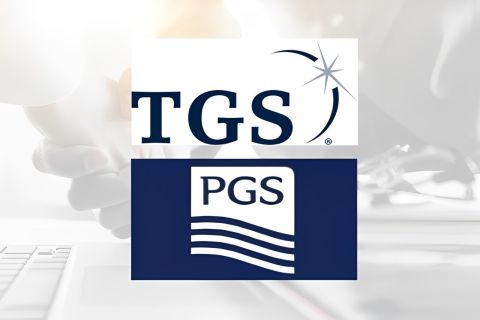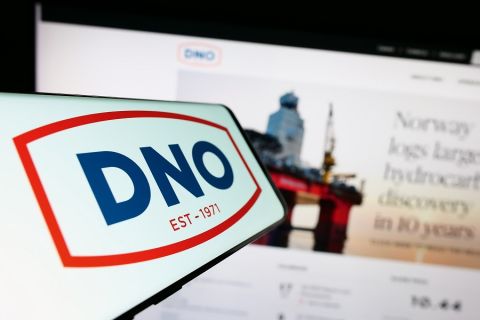The offshore industry has always been an integral part of the global oil and gas supply mix. The increasing contribution from deepwater and ultra-deepwater projects – on a steep growth curve and forecast to stay that way for the next decade and beyond – is playing a key role in raising the level of offshore production required to help meet world demand, itself rising at around 1% per year.
Total offshore oil production has been gradually rising for decades, but in recent years its pace of growth has picked up. It currently accounts for around 35% of global crude production, with deep and ultra-deepwater output making up around 9% of the figure.
Naturally, the level of total capital spending offshore is also soaring. Despite the headline-grabbing nature of the booming deepwater market, the shallow-water sector, up to 300 m (1,000 ft) water depth, is still expected to account for the larger share (around 60%) of the total figure forecast for 2013 of circa US $275 billion, according to recent figures from PFC Energy.
The deepwater segment will, however, continue to grow at a higher rate. The segment is expected in the longer term to overtake shallow-water spending by around 2020, driven by the ongoing surge in exploration and development spending in Brazil, West Africa, and the Asia Pacific regions.
The economics for individual offshore oil projects are expected to remain healthy over the coming year, with crude prices forecast (as well as they ever can be) to remain above the $75/bbl mark. This is a price level at which all but the most marginal field developments are economic.
Most experts can safely predict that significant discoveries will continue to be made in the emerging frontier provinces such as the east coast of Africa, the eastern Mediterranean Sea, and the west coast of Australia in addition to the established offshore hotspots of Brazil, the Gulf of Mexico (GoM), and West Africa.
New offshore frontiers: the Arctic
In offshore terms, it is the emergence of the Arctic as a realistic province for new oil and gas exploration and development – driven largely by Russia – that is expected to increasingly influence the strategic thinking of the supermajors and national oil companies. Most of the major players have been involved in the world's established deepwater producing plays for at least the past two decades, while they have also been busy in the past two to five years building positions in the newly emerging areas. So essentially there is nothing new happening there.
The Arctic Circle, however, is very much a newcomer for the offshore sector despite the projects in sub-Arctic areas such as Sakhalin off Russia's east coast. Many within the E&P business had very real doubts up until the past year or so as to whether this harshest of environments could be truly overcome, both in terms of the technological challenges and the weight of public opinion following environmental disasters such as Macondo in the GoM.
But the continuing advances in remote and subsea field development solutions; ice-resistant platforms; long-distance pipeline tiebacks; flow assurance innovations; ROV capabilities; and heightened regulatory regimes and environmental safeguards, largely due to the industry's deepwater activities, mean that from a technical and commercial perspective, fields today are able to be considered for development.
Most of the activity planned for the high northern seas within the Arctic this coming year will revolve around longer term plans by those companies who have had the foresight to form strategic joint ventures (JVs) with Russian companies such as Rosneft and Gazprom. In terms of actual offshore activity, Eni, ExxonMobil, BP, Shell, and Statoil are all in the early stages of planning seismic activity in areas such as the Barents Sea and Kara Sea in partnership with Rosneft, although any drilling activity under the umbrellas of these JVs remains several years away. All, however, will largely spend the coming year putting in place the elements required to ramp up the technology exchange elements of their respective deals.

Gazprom’s Prirazlomnaya platform in the Pechora Sea is on location and expected to start commercial drilling in 3Q 2013. If it goes to plan, Prirazlomnaya will herald the practical start of a major new era for the Arctic offshore sector. (Photo courtesy of Gazprom)
However, the Arctic's flagship event in 2013 to watch out for is likely to be one that has been entirely driven by Russia's Gazprom under its own steam. The first commercial offshore oil drilling in the company's Arctic waters is expected to get underway from its Prirazlomnaya platform in the Pechora Sea in 3Q 2013. If this project does hit its schedule and drilling gets underway from the platform – which has been on location for at least a year while the operator has addressed various technical concerns – it will signify the practical start of a major new era for the Arctic offshore.
The global picture
So what about the less icebound parts of the world? As usual, for the closest insights into the likely offshore business environment for next year, it is often best to ask the contracting community. According to Technip of France, the regional breakdown goes as follows for 2013:
North America:
- Upswing in US GoM;
- and Increasing activity offshore Mexico.
Latin America:
- Good visibility in Brazil, with a ramp-up of presalt developments.
North Sea:
- High level of subsea awards continuing;
- Step change in size and complexity of offshore developments; and
- Increase in platform activity.
Middle East:
- Sustained volume of activity; and
- Good opportunities offshore.
Africa:
- New discoveries to drive future offshore developments, including in new areas; and
- Project timing remaining uncertain.
Asia Pacific:
- Australian gas projects continuing to progress. Fellow offshore contractor Aker Solutions is forecasting strong demand in most regions, with high levels of tendering activity expected to continue well into 2013. "The increasing number of complex and deepwater fields is a strong trend in the global offshore industry," the company said in its latest results presentation. The company also flagged the subsea market as returning to "high growth," with major opportunities in the North Sea, Brazil, Asia Pacific, and West Africa. With around 95 deepwater drilling vessels currently on order worldwide, Aker said that between 20 and 30 newbuild rigs could be delivered each year until 2020. The company also flagged the floating production market as being at a historical high, with 74 units on order and approximately 230 in either final design, planning, or study phases. According to the latest figures from analyst Douglas-Westwood, the value of floating production installations in 2013 is forecast to be around $10.2 billion, growing to a figure of more than $26 billion in 2017 and largely dominated by expenditure on FPSO developments.
Aker Solutions also said the Brazilian markets are "moving from heavy oil, sandstone, and post-salt towards light oil and carbonated presalt," while in North America offshore activity is picking up with developments moving to increasingly deeper waters.
A developing rig trend
In terms of the offshore rig market, a number of players, including deepwater-focused Seadrill, are forecasting the increased importance of development drilling programs where activity is expected to further increase throughout 2013 and beyond.
Industry fundamentals remain strong, said the Norwegian driller, with overall spending on E&P – the key demand driver for offshore drilling services – having grown by more than 10% each year since 2009. This trend is widely expected to continue in 2013, the company added.
Because of this, oil companies are securing capacity earlier and on contracts with longer terms, Seadrill said. Consequently, the deepwater rig market already essentially is sold out for 2013, with 2014 going very much the same way. Seadrill Chairman John Fredriksen said in the company's latest results webcast, "The deepwater drilling industry is transforming from an exploration to a development industry. Such a transformation will trigger a significant increase in the need for the drilling of production wells to connect the fields that have been successfully explored in the recent years." His company has positioned itself to meet this need, with nine ultra-deep, ultra-harsh environment units due for delivery from next year through 2015 (plus options for several more).
Seadrill's fellow Norwegian rig player Sevan Drilling said that around half of the demand for deepwater drilling rigs going forward will be for development drilling programs, requiring mobile units and more specialization in rig designs.
This increased call for newbuild, high-specification deepwater rigs is being largely driven by the US GoM, where operators are demanding units with higher safety standards and greater drilling efficiency.
According to analyst Quest Offshore Resources, units such as the Pacific Santa Ana drillship are becoming increasingly typical. The drillship mobilized this year for Chevron under an initial five-year contract, with the rig the first to be built with dual-gradient drilling (DGD) capabilities designed to Chevron's specifications. The DGD system uses two weights of drilling fluid – one above the seabed and a second below the seabed – allowing drillers to more closely match well pressures. Benefits of a DGD system include the elimination of water depth as a consideration in well design as well as the ability to detect and react more quickly to changing downhole pressures.
Flagging this trend further in 2013 will be the Noble Bob Douglas drillship, coming to work for Anadarko Petroleum in the GoM with two complete six-ram BOP stacks. The $600 million rig is currently under construction at Hyundai Heavy Industries and is expected to go into service by the end of the coming year.
Higher specifications
"While the value proposition of a second BOP stack on newbuild drillships has become a topic of debate among drilling contractors, Anadarko's decision to take on the added cost will likely result in more units with dual BOP systems," said Quest in its latest GoM deepwater market report. Additional types of upgrades in the newer generation rigs being ordered for the GoM include increased crane capacity, increased variable deckload, and higher shear rams in the BOP.
Higher specification rigs, of course, command higher day rates, leading to a significant increase in the average rate for rigs under contract in the GoM. The average day rate among the 38 floating rigs currently under contract in the GoM is a global high of $485,000. The leading day rate being paid in the region (as of mid-November) is $672,000. With 92% of the fleet made up of ultra-deep rigs, the US GoM has the highest average day rates among the "golden triangle" regions, where more than 70% of all ultra-deepwater rigs are deployed.
Looking outside the US rig market, driller Ensco's chairman and CEO Dan Rabun said in the company's latest webcast that the African ultra-deepwater market remained extremely strong, with uncommitted time "virtually nonexistent until 2015." He also said Ensco believes that in the Asian and Australian markets the demand for deepwater floaters will increase in 2013. "There are a few multiyear programs that have yet to be awarded, and our customers are also talking about potential ultra-deepwater work commencing in 2014," he said.
His colleague Kevin C. Robert, senior vice president of marketing, added that looking at both the jackup and floating rig markets, 2012 was already looking like the fourth busiest year for contracting rigs in the last 10 years. This, he said, meant that a lot of clients have expanded their tenders to look for rigs until year-end 2014 because of the strength of the market. "So if you try to project that out and make some assumptions, if we continue at this pace, I think we're going to see 2014 availability disappearing as quickly as we saw 2013," he said.
Outside of just the rig market, Quest also said in its report that 2013 will be at the forefront of a new era for the GoM, when overall offshore spending in total is forecast to soar to $40 billion (from $31.6 billion in 2012). This rise is significant in that it will also be the first time in the GoM's history that overall deepwater spending (including deepwater capex and opex) overhauls and rapidly races away from shallow-water spending levels, a trend that is expected to continue for the foreseeable future.
Subsea milestones
In the subsea sector, the market is continuing to expand at a rapid pace, with this technology often the only economically viable recovery solution for increasingly remote or ultra-deepwater fields.
With the reliable indicator of subsea tree awards forecasted by Quest Offshore to total around 640 in 2013, the coming year is expected to see further substantial commitments made by operators around the world.
However, it is the emerging area of subsea processing that will catch the eye of many during the coming year. Bidding and tendering activity for subsea processing projects is set to shoot upwards over the course of the next two years, with at least eight in the pipeline for 2013 and a similar number likely for 2014, said John Gremp, FMC's chairman and CEO. This is compared to a relative handful previously.
In the company's 3Q 2012 results webcast, Gremp said, "Looking further out in 2013, there are more than eight named subsea processing projects. The ones that are coming up in 2013 are more boosting-oriented as opposed to separation – although there are a couple of separation projects. But looking beyond that into 2014, you get another eight to 10 named projects, and it swings back to the majority of those involving separation."
He said that not all of these would necessarily go ahead but it is "very encouraging" that the market is developing as FMC expected. "I'd say the market is developing even better than what we hoped," he added, saying that 2013 and 2014 should be "very strong for subsea processing."
The innovative Marlim separation system for Petrobras offshore Brazil – the world's first such system for deepwater subsea separation of heavy oil and water, with the water to then be reinjected – also was flagged by Gremp as being close to the startup of operations. The well in which the oil-water separation system is installed is currently flowing in a bypass mode, he said.
The separation system will be activated once the well flow reaches a higher water cut, currently expected to be around year-end 2012 or early 2013. The water will be reinjected into the formation. "We think Marlim's success will be a critical industry milestone, promoting wider acceptance of this technology while advancing further oil-water separation solutions," he said. The subsea separation module is sited in a water depth of 900 m (2,950 ft).
Gremp also said that, looking at the overall market, subsea industry tree orders up to the end of 3Q 2012 had already exceeded the 2011 total. "The number of large projects continues to grow, and over the next 15 months, we should see a large number of awards announced," he said.
Jack B. Moore, CEO and president of Cameron International, echoed this train of thought in his company's own 3Q 2012 presentation. "While West Africa and Brazil will support near-term opportunities for major awards, the re-emergence of the Gulf of Mexico, continued expansion in the gas monetization activities in Australia, and expanding markets in East Africa and the Mediterranean will drive new projects," he said.
Industry alliances
This wave of new offshore projects also will drive the growing number of strategic JVs and partnerships being formed between offshore contractors as they combine capabilities to position themselves for their targeted market sectors.
The recently announced five-year alliance between Heerema and Technip specifically targeting projects in the ultra-deep subsea sector is one example; the linkup between Keppel Shipyard and Golar LNG aimed at the emerging floating LNG market is another.
Cameron and Schlumberger's formation of their OneSubsea JV, marrying their combined expertise from the reservoir itself through the subsea production and export system, has further raised the competitive bar.
The overall feeling as the offshore industry prepares to enter 2013 is markedly different from last year. Throughout 2011, the global E&P sector was clearly struggling to emerge with any sureness of direction following the immediate ramifications of the Macondo disaster. As it enters a new year, however, the offshore industry is now giving strong signals that it knows exactly where it wants to go.
Recommended Reading
Ithaca Energy to Buy Eni's UK Assets in $938MM North Sea Deal
2024-04-23 - Eni, one of Italy's biggest energy companies, will transfer its U.K. business in exchange for 38.5% of Ithaca's share capital, while the existing Ithaca Energy shareholders will own the remaining 61.5% of the combined group.
E&P Highlights: Feb. 12, 2024
2024-02-12 - Here’s a roundup of the latest E&P headlines, including more hydrocarbons found offshore Namibia near the Venus discovery and a host of new contract awards.
PGS, TGS Merger Clears Norwegian Authorities, UK Still Reviewing
2024-04-17 - Energy data companies PGS and TGS said their merger has received approval by Norwegian authorities and remains under review by the U.K. Competition Market Authority.
DNO Acquires Arran Field Stake, Continuing North Sea Expansion
2024-02-06 - DNO will pay $70 million for Arran Field interests held by ONE-Dyas, and up to $5 million in contingency payments if certain operational targets are met.
ChampionX to Acquire RMSpumptools, Expanding International Reach
2024-03-25 - ChampionX said it expects the deal to extend its reach in international markets including the Middle East, Latin America and other global offshore developments.




